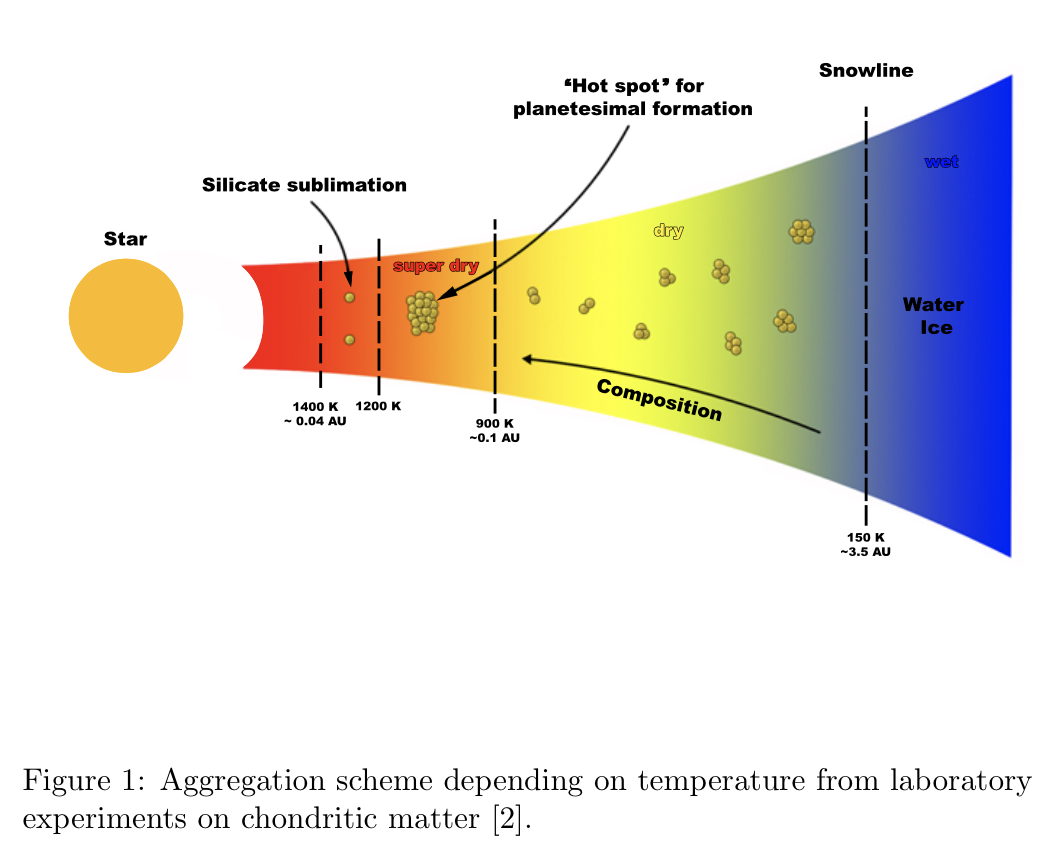The influence of water and mineralogy on sticking properties at increasing temperatures
- 1University of Duisburg-Essen, Faculty of Physics, Lotharstr. 1, 47057 Duisburg, Germany (tabea.bogdan@uni-due.de)
- 2University of Duisburg-Essen and Center for Nanointegration Duisburg-Essen (CENIDE), Faculty of Physics, Lotharstr. 1, 47057 Duisburg, Germany
Sticking properties are of great importance for planetesimal formation in protoplanetary disks. During the early phases of pebble growth, grains regularly travel from cold, water-rich regions to the warm inner part of the disk, experiencing ever higher temperatures. This drift leads to changes in composition, grain size, morphology, and water content. To follow the evolution that the dust might go through, we milled a meteorite to micrometer dust and tempered it under vacuum at increasing temperatures up to 1400 K. For each tempered sample we measured the splitting tensile strength of millimeter-sized dust aggregates using a well-established method known as the Brazilian test. To link the evolution of surface energy with temperature to compositional changes, we additionally measured the (ferric) composition of the samples by Mössbauer spectroscopy.
At the low pressure of protoplanetary disks and at moderate temperatures, grains presumably hold only a monolayer of surface water and can thus be considered as dry. As the dust drifts further inwards towards higher temperature regions even this monolayer of water may evaporate completely and grains are super dry. In the laboratory, contacts between grains in cylinders are dry and remain dry for measurement if they are prepared for the Brazilian test before tempering. If cylinders are prepared after tempering but from the tempered dust, contacts are wet contacts but the influence of the composition can be traced.
For wet samples, we measured an effective surface energy which monotonously decreases by a factor of 5 from room temperature to about 1300 K due to compositional changes [1]. This reduction of surface energy still holds for dry samples but with an increase in the sticking force by a factor of ~ 10 over the wet samples. Super dry samples deviate strongly from this starting at about 900 K. Above this temperature, the surface energy is boosted and increases exponentially up to another factor of ~ 100 at about 1200 K [2].
Exceeding temperatures of 1300 K, grain sizes microscopically change (increase) for all samples, leading to an instability of aggregates and therefore making growth challenging. Beyond 1400 K no classical collisional growth is possible.
As consequence, there is a spatial region in protoplanetary disks with temperatures around 1200 K which favors aggregation and, therefore, will likely be a sweet spot for planetesimal formation as indicated in fig.1.

[1] Bogdan, T., Pillich, C., Landers, J., Wende, H., & Wurm, G. (2020). Drifting inwards in protoplanetary discs I Sticking of chondritic dust at increasing temperatures. Astronomy & Astrophysics, 638, A151.
[2] Pillich, C., Bogdan, T., Landers, J., Wurm, G., Wende, H. (2021). Drifting inwards in protoplanetary discs II The influence of water on sticking properties at increasing temperatures. Astronomy & Astrophysics, (accepted).
How to cite: Bogdan, T., Pillich, C., Landers, J., Wende, H., and Wurm, G.: The influence of water and mineralogy on sticking properties at increasing temperatures, European Planetary Science Congress 2021, online, 13–24 Sep 2021, EPSC2021-514, https://doi.org/10.5194/epsc2021-514, 2021.

